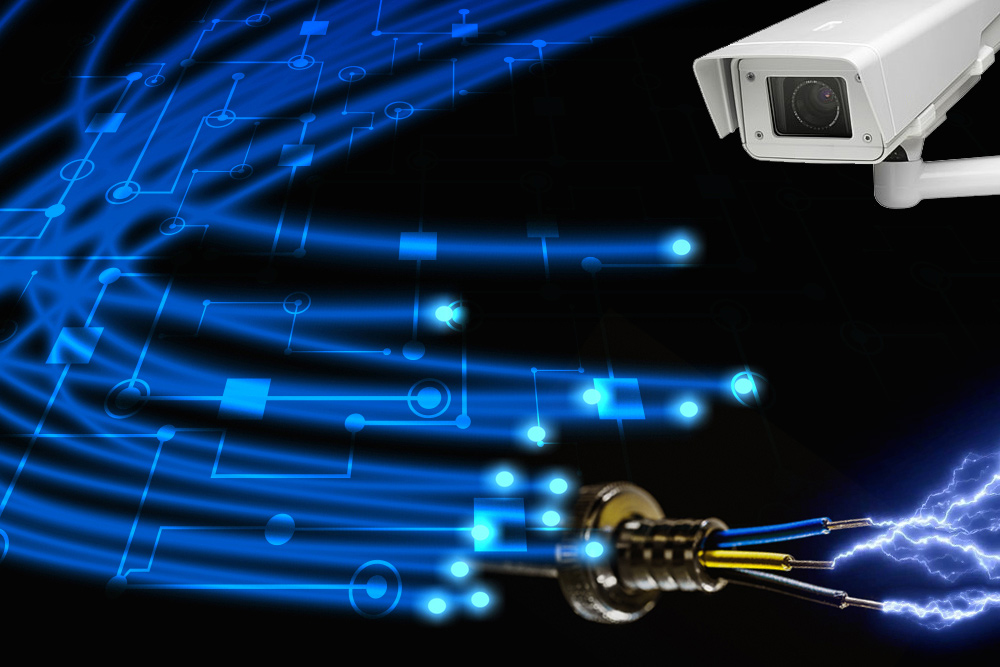Why a Fiber Optic Security System Is Essential for High-Security Facilities and Environments
Why a Fiber Optic Security System Is Essential for High-Security Facilities and Environments
Blog Article
The Ultimate Guide to Fiber Optic Safety And Security Solutions for Your Business
In an era where safety problems are extremely important for services, recognizing the ins and outs of fiber optic technology can be transformative. This overview details how incorporating fiber optic security systems not just enhances data security but also supplies advantages like resistance to disturbance and real-time tracking capacities.
Recognizing Fiber Optic Modern Technology

The core of a fiber optic wire is composed of a slim glass or plastic center, surrounded by a cladding layer that shows light back into the core. Single-mode fibers are designed for long-distance transmission, while multi-mode fibers are appropriate for shorter distances, often made use of within buildings.
Fiber optics are not just much faster yet additionally a lot more safe than typical wiring. Their inherent resistance to electromagnetic interference and the difficulty of taking advantage of the signal without discovery make them a preferred choice for companies focusing on data integrity and protection. As companies increasingly depend on safe and secure and reliable interaction systems, understanding fiber optic modern technology ends up being important for educated decision-making.
Key Advantages of Fiber Optic Security
When thinking about safety choices for a service, the advantages of fiber optic systems are specifically compelling. Fiber optic technology uses remarkable information transmission speeds and data transfer capability, making it perfect for taking care of high-resolution video feeds from monitoring electronic cameras. This capability guarantees that safety workers obtain real-time data, boosting general feedback times to possible security threats.
In addition, fiber optic wires are inherently immune to electromagnetic disturbance, which can endanger the stability of conventional copper-based systems. This resistance guarantees that the data transferred stays secure and undisturbed, offering an extra reputable protection framework. In addition, fiber optics are much less susceptible to physical damage, as they are made from glass rather than steel, decreasing upkeep costs and downtime.
One more significant benefit is the enhanced scalability of fiber optic systems. As service needs develop, fiber networks can be quickly broadened to accommodate extra safety and security tools without considerable overhauls to the existing framework. Ultimately, fiber optic systems provide improved cybersecurity attributes, consisting of security capacities that shield sensitive information from unapproved access. Collectively, these advantages make fiber optic security systems a robust choice for companies looking for to boost their protection procedures.
Setup Process and Considerations
Considering the intricacies involved, the installment procedure of fiber optic safety systems needs mindful preparation and execution. The preliminary step entails a thorough site analysis to identify optimal locations for cabling and equipment. This analysis should take into consideration ecological variables, existing framework, and possible vulnerabilities.

Additionally, the installment needs to follow local building ordinance and market requirements. This may consist of collaborating with various stakeholders such as building managers, IT groups, and safety and security workers to make certain seamless combination with existing systems.
Post-installation, extensive screening is needed to confirm system efficiency and recognize any type of problems that may occur. By prioritizing these factors to consider throughout the setup procedure, companies can make sure a robust and efficient fiber optic safety and security system that meets their specific safety and security needs.
Latest Innovations in Fiber Optic Security
Current advancements in fiber optic modern technology have significantly boosted the abilities of security systems for companies. Among one of the most remarkable advancements is the assimilation of fiber optic sensing units that can find resonances and intrusions along the perimeter of a facility. These sensing units provide real-time monitoring, allowing rapid action to possible breaches.
In addition, the advancement of dispersed website link fiber optic sensing innovation enables the continual monitoring of huge areas with a solitary fiber cable television. This approach not only decreases installation costs but additionally boosts the reliability of keeping an eye on systems by eliminating the demand for multiple, different sensing units.
In addition, improvements in multiplexing strategies have actually enabled organizations to transfer huge quantities of information over fiber optic networks, enhancing the capabilities of video clip monitoring systems. High-definition video feeds can now be sent out over fars away without loss of top quality, ensuring that safety employees have accessibility to clear and actionable info.
Last but not least, the use of expert system (AI) together with fiber optic systems is revolutionizing risk discovery. AI formulas can analyze information from fiber optic networks to determine unusual patterns or behaviors, enabling for proactive protection steps. These advancements collectively represent a considerable jump onward in fiber optic protection technology.
Selecting the Right System for Your Service
Selecting the suitable fiber optic security system for your business is essential for guaranteeing optimal defense and tranquility of mind. To make an informed option, assess your specific safety and security needs, thinking about elements such as the dimension of your properties, the nature of your procedures, and possible vulnerabilities.
Begin by examining the degree of safety needed; for example, risky settings may require advanced systems with incorporated surveillance and intrusion discovery capacities. Next off, think about scalability; as your organization grows, your protection system ought to can increasing to accommodate raised needs without substantial overhauls.
Additionally, check out the reliability and performance of different systems. Look for providers with established reputations and consumer testimonials that prove to their service top quality. It's additionally a good idea to ask about the modern technology's compatibility with existing facilities, making certain a seamless combination procedure.
Verdict
In conclusion, fiber optic security systems provide a robust option for boosting organization protection go right here frameworks. The most recent developments better boost the efficiency of these systems, making sure visit this page that organizations continue to be safe and secure and versatile in an ever-evolving danger landscape.
Report this page